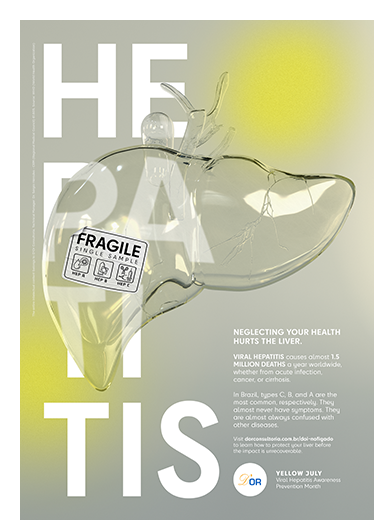
Viral hepatitis is an infection of the liver that, in advanced stages, severely impacts the functioning of the 2nd largest organ in the human body, resulting in complications such as liver failure, advanced fibrosis, and cirrhosis. Some of these impacts can be irreparable, leading to the need for transplantation or to the development of liver cancer.
Every year, hepatitis is responsible for more than 1.4 million deaths worldwide, and its silent nature – in many cases people go decades without discovering the infection – does not usually forgive those who pay attention only to the most classic symptoms.
Tiredness
Fever
Malaise
Dizziness
Nausea
Vomiting
Abdominal pain
Constipation
Yellowish skin and eyes
Muscle pain
Dark urine
Diarrhea


(HCV virus)


Leading the number of cases in Brazil, it manifests itself chronically, in the overwhelming majority of cases, and is considered a global epidemic: its mortality rate can be compared, for example, to HIV and tuberculosis.
Most of those infected are unaware of their diagnosis: in 2016, it was estimated that about 657,000 people had the disease in Brazil. But between the years 1999 and 2018, only just over 359,000 cases were reported.
MAIN TRANSMISSION ROUTES

Contact with contaminated blood on needles, syringes, and objects used in shared drug use.

Reuse or poor sterilization of medical, manicure, hygiene, or tattoo equipment.

Invasive procedures (hemodialysis, surgery, transfusion, etc.) without proper biosafety care.

Unprotected sex and mother-to-child transmission during pregnancy or delivery (less common).
INCIDENCE
People over 40, individuals deprived of freedom, hemodialysis patients, and drug users are most affected by the disease. It is most often found in the South and Southeast regions of Brazil.

DIAGNOSIS AND TREATMENT
Since 2011, the Ministry of Health has distributed quick tests, which should be done periodically by the most vulnerable populations.
Antiviral drugs provide a cure. They are usually administered for 8 to 12 weeks and have success rates of over 95%.

(HBV virus)



Second only to type C in the number of national cases, hepatitis B is also classified as a sexually transmitted infection.
It usually clears up spontaneously within six months, but, like hepatitis C, it can manifest itself chronically.
MAIN TRANSMISSION ROUTES
Unprotected sex and mother-to-child transmission during pregnancy or delivery.
Contact with contaminated blood on needles, syringes, and objects used in shared drug use.
Reuse or poor sterilization of medical, manicure, hygiene, or tattoo equipment.
INCIDENCE
Sex workers, people deprived of their freedom, homeless people, and drug users are the most recurrent victims, while children are the most likely to develop the chronic form of the disease – the younger they are, the higher the risk.
It is more common in the Amazon region and in some parts of the Southern region.



DIAGNOSIS AND TREATMENT
- Hepatitis B has a vaccine, universal and for free.
- As with type C, the Ministry of Health has also distributed quick tests since 2011. Because of the high incidence in children, it is important to perform them in pregnant women.
- Although there is no cure, antivirals slow the progression of cirrhosis, reduce the incidence of cancer, and improve patient survival.


(HAV virus)





Ranking 3rd nationally for cases is hepatitis A, also known as “infectious hepatitis. It usually evolves as a disease of benign character.
MAIN TRANSMISSION ROUTES
Fecal-oral (feces and mouth): water or food unfit for consumption.
Low levels of sanitation and personal hygiene.
Close personal contacts with infected individuals (from the same household, homeless people, children in day care centers, etc.).
Cases and outbreaks among populations practicing anal sex, providing fecal-oral-oral contact (oral-anal sex).
INCIDENCE
In countries whose sanitary conditions are unstable, such as Brazil, there is a reduction in the number of people who have contact with the virus during childhood and, consequently, an increase in the number of people who become infected later in life.
They are mostly concentrated in the Northern and Northeastern regions.



DIAGNOSIS AND TREATMENT
- Hepatitis A has no specific treatment and its main form of prevention is the vaccine.
- The diagnosis is made by means of a blood test.
HEPATITIS D (Delta) and E
With more discrete recurrence, hepatitis D (or Delta) is more common in the Northern region. Its means of transmission are identical to those of hepatitis B, as is the prevention – the type B vaccine also immunizes against type D.
There is also type E, which is more easily found in Africa and Asia. With transmission routes very similar to those of the A virus, E is most commonly transmitted by the fecal-oral route and through consumption of contaminated water.
DRUG-INDUCED
Hepatitis and COVID-19
Another existing condition is the occurrence of hepatitis that is not linked to infections, but rather to the use of medications. Recently, Unicamp (University of Campinas) confirmed the the first case of drug-induced hepatitis related to the “COVID kit””. In susceptible individuals, the use of some medications can become toxic and harmful to the liver.
When the subject is COVID-19, the use of kits, alternative forms of treatment, and self-medication aimed at preventing the disease are of concern to the medical and scientific communities. First, because they have no evidence of proven efficacy in fighting the disease, and second, because they have been shown to be harmful in other respects, such as in the case of the development of drug-induced hepatitis, as mentioned before.
Stay alert to the transmission routes, routine tests, and see your doctor in case of suspicion.
Protect your liver. You only have this one.
YELLOW JULY
Viral Hepatitis Awareness Prevention Month
Technical Manager
Dr. Sérgio Hércules – CRM (Regional Medical Council) 61.605






